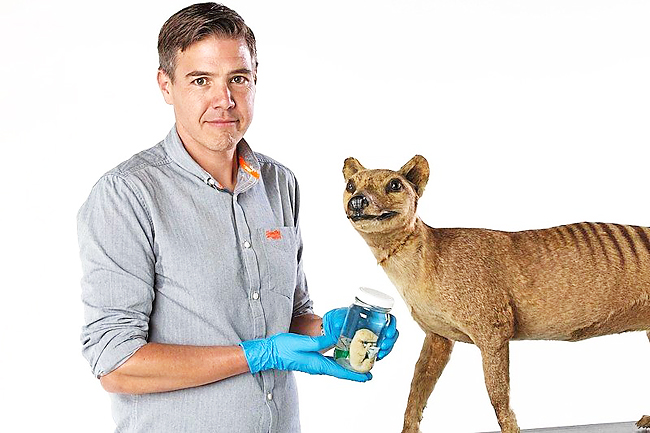Michelle Ostwald
THE STAR/DPA – A dog-like, partly striped animal paces round a cage and sniffs at a man through the mesh. The grainy film from 1935 shows Benjamin, the last known Tasmanian tiger, “forced out of its natural habitat by the march of civilisation”, the narrator said.
One year later, the carnivore died at the Beaumaris Zoo in Tasmania’s capital Hobart, rendering the black-and-white footage a rare marker in the tragic disappearance of an entire species.
Since then, Thylacinus cynocephalus has been officially extinct. But researchers now believe it’s possible to raise it from the dead.
“Fifteen years ago, the idea of actually bringing the animal back was still science fiction,” said Head of the newly created TIGRR Lab, short for Thylacine Integrated Genetic Restoration Research, at the University of Melbourne Professor Andrew Pask.
Today, the available technology is believed to offer a chance at its de-extinction, although it is a highly labourious undertaking.
The researchers first had to decipher the genome – the complete set of DNA or genetic material – of a Tasmanian tiger that had been preserved in alcohol for 100 years. In 2018, Pask’s team published the first complete genome sequence.
In mainland Australia and New Guinea, the animal disappeared up to 3,000 years ago. But in isolated Tasmania, thylacines were able to survive until Europeans settled on the island in the 18th Century. Known as a sheep killer, the predator was hunted to extinction and the government even paid a reward for each specimen shot.
However, it is not possible to create life from a dead specimen. “We still have to start with something living,” said Pask, which is why de-extinction projects search for the closest living relative of the vanished animal.

In this instance the choice was, rather curiously, the thick-tailed narrow-footed pouch mouse.
This small rodent, or dunnart, is endemic to Australia and can have its DNA “edited” to match that of the Tasmanian tiger.
If the team succeeds, cloning technology could be used to create a whole thylacine embryo that would then be carried to term by the mouse, which is only about 11cm tall.
“This is one of the great things about marsupials: They give birth to really tiny babies,” said Pask. Tasmanian tiger babies are about the size of a grain of rice at birth, so a mouse can carry the baby of a Tasmanian tiger.
The young would then be raised in the laboratory, after which the predator – if all goes well – will be released back into its natural habitat in Tasmania.
“It is also part of our mission to undo the wrongs committed in the thylacine’s eradication solely at the hand of mankind,” said CEO of Texan biotech company Colossal Biosciences Ben Lamm, which specialises in de-extinction and collaborates with the TIGRR Lab.
“Colossal is helping with the computational biology and genome engineering and editing on the project as well as working to establish a long-term plan for re-wilding,” said Lamm.
The company has a financial stake of AUD10 million in the project, which also received millions in donations from private investors, including Australian actors and brothers Luke and Chris Hemsworth, famous for films such as Thor and Snow White And The Huntsman.
Meanwhile, some scientists scorn the notion of recreating the thylacine or other extinct species like the mammoth.
“I still don’t believe we are even close to having the technology to genuinely re-create an extinct animal,” Professor Jeremy Austin of the Australian Center for Ancient DNA told The Sydney Morning Herald.
De-extinction is a “fairytale science”, he said, dismissing the project as a bid for publicity by the researchers involved.
Others take a more holistic stance towards the idea of resurrecting species wiped out by destructive human behaviour.
“For the World Wildlife Fund (WWF) Germany, such genetic engineering projects do not represent a way out of the biodiversity crisis,” said WWF species protection expert Anne Hanschke.
It is more important to eliminate the causes of species extinction, such as the destruction of habitats, the overexploitation of nature or the climate crisis, she said.
“Moreover, there is something of a risk of not taking the necessary steps to conserve species now, because you can ‘recreate’ them later if necessary,” added Hanschke.
Ultimately, even if it were possible to create such an animal, it is unlikely to exhibit the same behaviours it would have learned from a member of the same species, and to be able to occupy the same ecological niche as its predecessors.
TIGRR Lab still believes that it will have produced a living cell with thylacine code in five to 10 years.
But it’s not just about a single species. The methods should also help animal species that are threatened with extinction today, said Pask, “We now do biobanking. That means we collect tissues and cells from animals from wild populations and freeze them.”






